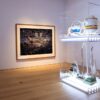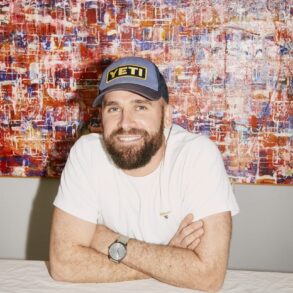
Working in the art world has many perks. The parties are great, and the people all understand your jokes about Cy Twombly. But it’s not so easy to find a job in the art world, as the number of roles is limited, even at the biggest galleries. From an employer’s perspective, hiring is difficult, too, because the knowledge is so specialized.
Enter Field Recruitment, a bespoke recruiting and consulting firm focused on the art world, aimed at serving galleries, auction houses, advisory firms, museums and other non-profits. The New York-based company was just launched by Ines de Seroux and Megan ODell, whom Observer asked about their new business.
What was the impetus behind the creation of Field Recruitment?
Megan ODell: We saw a real need for a new approach to the recruiting process within the art world. After being in the industry for over a decade each, Ines and I are uniquely equipped to understand the qualifications and personalities that make candidates successful in different roles. We relate to both sides of the process, and we know first-hand the importance of hiring the right person and finding the right position.
SEE ALSO: Hank Azaria On What It Takes to Change
It feels like more people want to work in the art world than ever before. What are the primary challenges to filling jobs?
Megan ODell: To be successful in the art industry you need to be multifaceted. It takes more than a degree in art history—you need business acumen, art market knowledge and the ability to communicate about art in compelling and interesting ways. The most successful people are those who can wear many hats, who have great initiative, who can think strategically and execute and who are always customer service-minded. These are somewhat intangible qualities to recruit for, but after so many years in the industry, Ines and I are very good at picking up the cues and asking the right questions to determine if someone has the qualities needed to succeed.
You both come to this endeavor with unique backgrounds. How would you say they complement each other?
Ines de Seroux: Megan was in operations, and I was in sales. We both saw and experienced different facets of the art world and its mechanisms. And we both also worked in Europe and the United States—two very different markets. We bring different perspectives to the table but with a shared understanding of what is needed for organizations and individuals to be successful.
How has art world staffing changed in the past ten years?
Megan ODell: There have been so many changes in the last decade. In terms of galleries, we’ve seen the international expansion of several galleries, first from New York to London and then on to Paris, as well as the reverse with European galleries opening in New York. Post-Brexit we’ve seen the Paris art market grow tremendously. And of course, there is the rise of the West Coast market in the US, the expansion of art fairs across the world, and on and on. All of this ultimately means more opportunity and with this a growing professionalization of the art industry.
Your firm works internationally. What are the differences in the art world in the United States vs. Europe?
Ines de Seroux: There are both fundamental and nuanced differences. Employment laws, standards of living and pay scales vary across cities and countries. For example, a Sales Director in San Francisco won’t have the same base salary as a Sales Director in London. On the more nuanced side, New York is by far the largest job market and in some ways the most entrepreneurial—a lot is happening at the intersection of art and finance, art and tech, etc. Likewise, with the flagship locations of the major blue-chip galleries in New York, we are seeing the evolution of roles and departments that sit outside of traditional gallery models (i.e., well-resourced research teams, online sales and marketing teams, special project teams).
Additionally, the art world in Europe has previous experience working with recruiters. We are the first U.S.-based art world recruiting firm, and the appetite for our expertise has been extraordinary. In just the last month, we have been approached by galleries, auction houses, museums, non-profits, advisors, and even artists looking for studio managers and other resources.
Prior to founding the company, what were your favorite jobs in the art world and why?
Ines de Seroux: I would say that working at Gagosian on their sales team was one of the most challenging but also enriching experiences of my career. It taught me to work harder and faster than anyone!
Megan ODell: For me, it’s impossible to choose! I learned so much from each of the jobs I’ve had, and I have been able to take the skills I learned in one role and fine-tune and expand on them in the next role. I’ve also been incredibly lucky to work with the people I’ve worked with—from Phillips to Pace to Skarstedt—I’ve had the privilege of working for and with hugely talented people.
What advice would you give to someone who wants to work in the art world?
Megan ODell: I would say to look at as much art as possible, always! No matter what part of the art world you want to enter, an object-based understanding and appreciation of art is important. And be prepared to work hard and work smart – look for opportunities everywhere and always be ready to capitalize on them.
Ines de Seroux: I would tell them to hit the ground running and focus on gaining work experience rather than advanced degrees. And once they find themselves with an opportunity, spend time building a strong network within an organization. Relationships at all levels are key to success.








